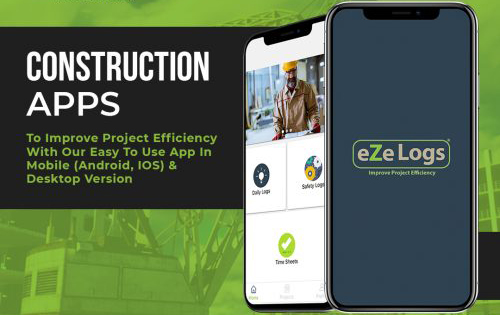In an era where the preservation of our planet is paramount, the construction industry stands at a pivotal crossroads. The call for sustainability has grown louder, and as the world awakens to the environmental consequences of unchecked development, the spotlight is now firmly on those who shape our built environment. Welcome to the Sustainability Showcase, where we delve into a crucial aspect of construction: the selection of environmentally-conscious tenderers.

In this age of heightened awareness, it’s no longer enough for construction projects to merely stand as testaments to architectural prowess. The materials we use, the methods we employ, and the decisions we make during the tendering process can have a profound impact on the world around us. As we embark on a green revolution, the construction sector has the unique opportunity to lead the charge towards a more sustainable future.
In this article, we embark on a journey to understand the power of procurement and its potential to drive positive change within the construction industry. We’ll explore the qualities that define an environmentally-conscious tenderer, the ripple effects of their selection, and the challenges faced in navigating this new paradigm. Through enlightening case studies and a glimpse into the future of construction tendering, we’ll unveil the blueprint for making conscientious choices that not only benefit the environment but also foster innovation and economic growth.
Join us as we uncover the strategies, successes, and aspirations that define the path towards a greener construction sector. In the Sustainability Showcase, the spotlight is on the champions of change, the architects of eco-friendly progress, and the pioneers of a construction industry that’s not just built to last, but built to sustain.
The Green Revolution in Construction
Amidst a changing world landscape, the construction industry is undergoing a remarkable transformation – a Green Revolution. Fueled by escalating environmental concerns, stakeholders within the sector are embracing sustainable practices like never before. This seismic shift reflects an evolving ethos that prioritizes eco-friendly materials, energy efficiency, and reduced carbon footprints.
As architects and engineers design structures with a renewed commitment to the environment, a crucial aspect lies in the hands of the tenderers – those responsible for bringing these blueprints to life. The Green Revolution is not limited to the drafting table; it extends to every phase of construction. The choice of tenderer wields immense power, as their selection can determine whether a project embraces sustainable building methods or adheres to conventional, less eco-conscious approaches.
The Green Revolution beckons the construction industry to embrace a harmonious fusion of innovation, responsibility, and progress. As we journey deeper into this revolution, the role of tenderers as sustainability advocates becomes increasingly apparent, shaping not just the edifices of tomorrow, but also the health and longevity of our planet.
The Power of Procurement
Procurement, often deemed a logistical process, is emerging as a dynamic force propelling the sustainability agenda within the construction domain. This unassuming phase of project development holds the potential to wield a mighty influence, steering the industry towards environmentally conscious practices.
The power of procurement lies in its ability to dictate the sourcing of materials, technology, and expertise. By making informed choices during tenderer selection, project owners can initiate a domino effect of positive change. Opting for environmentally-conscious tenderers not only aligns projects with ecological goals but also stimulates innovation, encouraging the adoption of greener building methods and materials.
In a world increasingly attuned to the repercussions of climate change, procurement stands as a linchpin, orchestrating a harmonious symphony of sustainable development. By harnessing this power, the construction sector can position itself as a vanguard of environmental responsibility, shaping a legacy of construction that is both enduring and earth-friendly.
Qualities of an Environmentally-Conscious Tenderer
An environmentally-conscious tenderer embodies a distinctive set of qualities that extend beyond construction expertise. Firstly, a firm commitment to sustainable practices, demonstrated through a track record of executing projects with reduced environmental impact, is paramount. Transparency in operations, including open communication about sourcing, materials, and waste management, showcases integrity.
Innovation takes center stage as environmentally-conscious tenderers actively seek new, eco-friendly techniques and materials. Collaboration with diverse stakeholders fosters a holistic approach, integrating environmental goals into project outcomes. Adapting to evolving green standards and regulations signifies adaptability and dedication to staying at the forefront of sustainable construction.
Ultimately, an environmentally-conscious tenderer goes beyond construction, championing stewardship of our planet. Their ethos resonates with a larger vision of harmonizing progress with ecological well-being, making them indispensable in steering the construction industry towards a greener horizon.
The Ripple Effect
The choice of environmentally-conscious tenderers reverberates far beyond individual construction projects, igniting a powerful ripple effect throughout the industry. By prioritizing sustainability, these tenderers stimulate a demand for eco-friendly materials, driving innovation and affordability. Subcontractors and suppliers are compelled to align with sustainable practices, creating a cascading influence.
Communities surrounding construction sites benefit from reduced pollution and improved well-being, as environmentally-conscious projects often integrate green spaces and mitigate environmental disruption. Moreover, the ripple effect extends along the supply chain, catalyzing the growth of a green economy and fostering job opportunities in emerging sectors.
As projects led by environmentally-conscious tenderers flourish, they become showcases of success, inspiring others to embrace sustainability. The ripple effect thus transforms singular choices into a collective force, propelling the construction sector towards a harmonious future where ecological responsibility and construction innovation go hand in hand.
Navigating Challenges and Overcoming Barriers
While the path to selecting environmentally-conscious tenderers is promising, it is not without challenges. The upfront costs associated with sustainable materials and practices can appear prohibitive, requiring careful consideration and long-term perspective. Limited availability of green technologies and materials in some regions poses another hurdle.
Overcoming these barriers necessitates a combination of informed decision-making, collaboration, and innovation. Leveraging financial mechanisms like incentives and grants can offset initial costs. Industry-wide collaboration fosters knowledge exchange and accelerates the adoption of sustainable practices. Embracing innovative solutions, such as modular construction and 3D printing, can revolutionize eco-friendly construction.
In the face of challenges, the construction sector’s transformation towards sustainability requires perseverance, adaptability, and a shared commitment. By addressing these obstacles head-on, stakeholders can usher in a new era of construction that not only builds structures, but also paves the way for a greener, more resilient future.
Steps Towards Sustainable Tenderer Selection
Selecting environmentally-conscious tenderers involves a strategic approach. Begin by setting clear sustainability criteria aligned with project goals. Evaluate tenderer portfolios, examining past projects for eco-friendly practices and successful sustainability integration. Conduct interviews to gauge their commitment to green initiatives and innovative solutions.
Engage in transparent communication about project expectations and sustainability standards. Collaboratively explore potential challenges and solutions, demonstrating a shared commitment to environmental stewardship. Consider establishing a framework for ongoing performance measurement and improvement.

Furthermore, prioritize a holistic evaluation that encompasses not only technical expertise but also cultural alignment with sustainable values. By following these steps, stakeholders can make well-informed choices that go beyond construction excellence, contributing to a more sustainable future for both the industry and the planet.
The Future of Construction Tendering: Green and Beyond
The future of construction tendering is a dynamic landscape of innovation and sustainability. As technology advances, data-driven insights will revolutionize tenderer selection, enabling more precise assessment of environmental practices and project outcomes.
Emerging trends indicate a shift towards circular economy principles, with tenderers embracing designs that prioritize adaptability, reuse, and recycling. Integration of renewable energy sources and smart technologies will become standard, ensuring projects are energy-efficient and environmentally responsive.
Furthermore, blockchain and decentralized systems could enhance transparency and accountability in supply chains, fostering a culture of ethical sourcing and sustainability. In this forward-looking realm, the construction sector will transcend traditional boundaries, embracing a holistic vision that encapsulates ecological harmony, social responsibility, and economic prosperity. Tendering, once a routine process, is poised to become a catalyst for a greener, more sustainable construction industry and a beacon of hope for a brighter future.
Final Thoughts
In the ever-evolving world of construction, the choice of environmentally-conscious tenderers emerges as a beacon of hope, guiding us towards a future where progress and sustainability coexist harmoniously. As we navigate the complex terrain of project development, it’s clear that the power of procurement transcends mere logistics – it is a force that shapes the very fabric of our built environment.
By embracing the qualities of an environmentally-conscious tenderer, we harness the potential to enact profound change. The ripple effect extends beyond individual projects, transforming industries, communities, and mindsets. Challenges are met with ingenuity, and barriers become stepping stones towards a greener horizon.
As the future beckons, construction tendering stands at the precipice of transformation. Technological innovations, circular economies, and ethical paradigms converge, illuminating a path that leads us not only towards a sustainable construction sector, but also towards a world where our collective actions safeguard the planet for generations to come. The stage is set, the choices are ours, and the legacy we build holds the promise of a brighter, greener, and more harmonious tomorrow.


